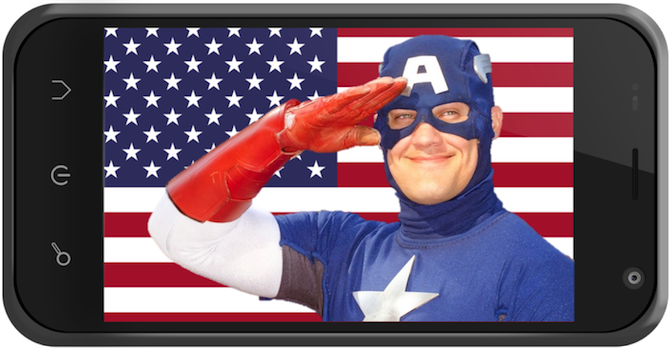Though I already discussed Programmatic Buying and Real Time Bidding in an earlier post, it occurs to me that one of the summer’s biggest blockbusters did a much better job of explaining it than I ever could. Hidden amongst the exploding hover-ships and slam-bang acrobatics of Captain America: The Winter Soldier, there’s a cleverly-disguised examination of this important new trend in mobile advertising.
At least, that’s what I think they were going for…
Captain America 1: Run-of-Network Supervillainy
In the previous Captain America film, Cap’s nemesis The Red Skull concocts a pretty typical supervillain scheme: building a bunch of magical alien nazi bombs to blow up the world. Red Skull is totally indiscriminate about the reach of this operation, targeting the entire planet and not really concerning himself with collateral damage.
As far as evil plans go, it’s pretty inelegant—not to mention ridiculously wasteful. In mobile advertising, we call Red Skull’s approach to targeting “Run of Network,” and as you might expect it’s the cheapest and least effective way to target a campaign. You basically tell your advertising network, “send my mobile ads out to anyone, on any publisher, anywhere.” You get the best overall reach, and access to the greatest number of unique eyeballs—but just like with Red Skull’s plan, there’s a lot of wasteful collateral damage. You pay for clicks or impressions from consumers for whom your ad may be totally irrelevant.
Run of network might be the best option for certain campaigns if you want to target a truly universal audience, or if you’re A/B testing how an ad is performing across different regions, publishers, or demographics. But it doesn’t take advantage of one of mobile advertising’s greatest “superpower”: precision audience targeting. With a premium mobile advertising network, mobile ads campaigns can be tailored to target consumers on a 1-to-1 basis, with a campaign’s reach segmented by demographic, general interest, optimal time-of-day (dayparting), and exact geographic location (geo-targeting).
The price for more targeted campaigns is generally higher than run of network, but the boost to performance is obvious: geo-targeted ads, for example, tend to do 2-3x better than the industry average.
Captain America 2: Programmatic Buying And World Domination
The next evolution in mobile audience targeting—though the technology still isn’t quite where it needs to be—is happening via programmatic buying. Programmatic buying refers to the process of using algorithms and software platforms to automate the buying and selling of mobile ad space in real time, with the benefit of up-to-the-moment contextual data about the unique consumer that’s about to view the ad.
It’s also (SPOILERS) more-or-less how the bad guys in Captain America: The Winter Soldier plan to take over the world.
See, in the seventy years that passed since The Red Skull tried to do his thing with those magic alien nazi bombs in Captain America 1, supervillain technology has seen some serious improvements. Hydra’s diligent team of mad scientists managed to create an algorithm for programmatic evil-doing: instead of targeting everyone, their doomsday weapons only target a hyper-relevant audience.
They analyze contextual data about people’s browsing history, available consumer data, and infer relevancy based on a number of different demographic and regional factors. Their KPI is world domination, and because the scope of that sort of thing is far too large to be managed by human beings, Hydra had no choice but to use software to automate the process—picking out ideal targets in real time.
Ironically, if Hydra had abandoned their whole “global holocaust” thing and instead gone into the mobile advertising business, they would have been so successful they probably could have conquered the world, anyway (cornering the market on a projected $100 billion a year business).
And they wouldn’t have had to worry about that pesky Captain America foiling their plans.

